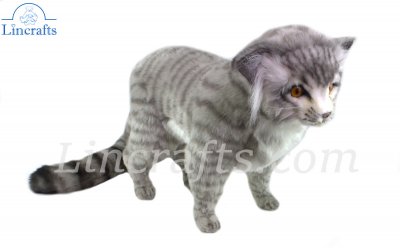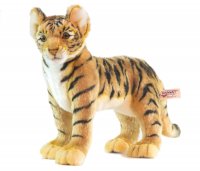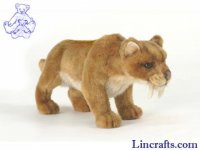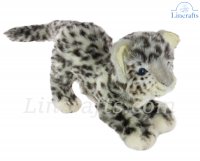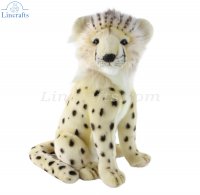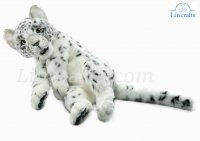Manufacturer: Hansa
Category: Animals
A Scottish Wildcat by Hansa with a long tail and airbrushed markings which bring the face to life.
It has support in its legs and neck so the pose can be changed slightly.
Made from the finest materials to the highest standards and carries the CE mark which means it is safe for children (not under 36 months).
Size approx. 16"(41cm) in length, 10.25"(26cm) in height with a 13"(33cm) long tail.
- European safety standards EN71 BS5665
- Carries the CE label so it safe for children (not under 36 months)
- Surface washable
- Quality item with airbrushed details
The Scottish wildcat's fur is distinctly striped with a solid tabby patterning. Its ringed tail is bushy with a black tip. It differs from the domestic cat by stripes on the cheeks and hind legs, the absence of spots, white markings and coloured backs of the ears. It is heavier than a domestic cat, has longer limb bones and a more robust skull. It is also larger in body size, but with a shorter gastrointestinal tract. The head-to-body length of males ranges from 578 to 636 mm (22.8 to 25.0 in) with 305–355 mm (12.0–14.0 in) long tails and of females from 504 to 572 mm (19.8 to 22.5 in) with 280–341 mm (11.0–13.4 in) long tails.
The Scottish wildcat has been present in Britain since the early Holocene, when the British Isles were connected to continental Europe via Doggerland. It was once common throughout all of Great Britain. In southern England, it likely became locally extinct during the 16th century. By the mid-19th century, its range had declined to west-central Wales and Northumberland due to persecution, and by 1880 to western and northern Scotland. By 1915, it occurred only in northwestern Scotland. Following the decreasing number of gamekeepers after World War I and a re-forestation program, the wildcat population increased again to its current range. Urbanization and industrialization prevented further expansion to the southern parts of Scotland. Its current distribution includes the Cairngorms, the Black Isle, Aberdeenshire, the Angus Glens and Ardnamurchan. It lives in wooded habitats, shrubland and near forest edges, but avoids heather moorland and gorse scrub. It prefers areas away from agriculturally used land and avoids snow deeper than 10 cm (3.9 in).


